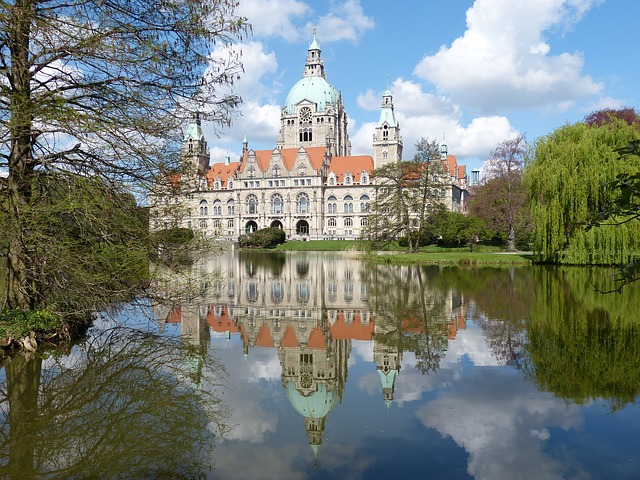Football fixtures are played right across the weekend and into Monday in Germany. So if you time your visit well and base yourself in the right place you could see at least three games over a long weekend. And if you have chosen wisely you will also find plenty of other things to keep you busy and entertained as well as watch football.
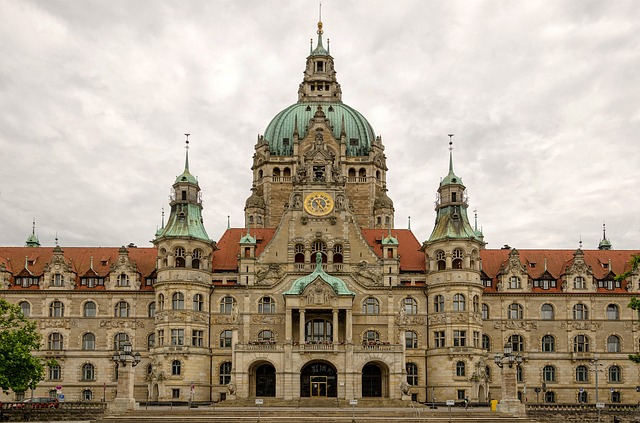
It all comes down to choosing the right base. It should have:
- an airport with frequent flights to major European cities.
- good train links to other parts of Germany.
- a well organised local transport system.at least 5 interesting football clubs within easy reach.
- lots of interesting things to do and see beyond going to games.
Hannover is a perfect match.
With an airport just outside town and linked to efficient intercity train network, Hannover is easy to get to. It’s a modern city, but 750 years of history mean there is plenty to see and do here. And, of course, there are plenty of football clubs within easy reach.
Bundesliga
2. Bundesliga clubs
Getting to Hannover
Plane
Hannover has its own airport – Hannover-Langenhagen. There are direct flights here from London Heathrow, Stansted and City, Birmingham, Manchester airports. A direct flight will cost about £150 return and take about 90 minutes.
The S5 train (S-Bahn) will take you from the airport (Terminal C) to the city centre in 18 minutes. Trains run every 30 minutes throughout the day.
You can also fly to Hamburg, Bremen or Düsseldorf and continue your journey by train.
Train
The city is a major rail destination, with intercity and regional connections right across the country. You can travel by Eurostar train all the way from London – changing at Brussels and Cologne. Find out more about getting to Hannover by train at the Deutsche Bahn website.
There is a large and very modern bus station with arrivals from all over Germany and beyond. A return ticket by bus – for example with Flixbus – will cost about £100.
Car
The city is also well served by Germany’s motorway network. The A2 (East-West) and A7 (North-South) motorways pass close to the city. The main German motoring organisation is called ADAC. You can use its website to plan your journey.
Getting around in Hannover
Local bus, tram and train services are integrated, so you can travel anywhere with the same ticket. Find out more about tickets and fares here.
Save money with the HannoverCard
You can by a one day HannoverCard for 20 euros. This gets you free travel on all local transport as well as access to special offers and reduced entrance to a range of attractions. Find out more here.
Getting around the region
If you decide to visit clubs beyond Hannover you will probably need to travel by train. You can plan trips and order e-tickets at the Deutsche Bahn website.
Another very helpful place to organise your travel is Loco2.
Save money with the Niedersachsen ticket
Hannover is in the middle of Lower Saxony (Niedersachen). Look out for the Niedersachsen rail ticket. This costs 23 euros for one person and then 4 euros per person for up to 4 more travellers. It entitles you to free travel for a day on RE, RB, S and RS trains all over the region. You can also use it on public transport in Osnabrück, Braunschweig, Hannover, Hamburg, Bremen and Wilhelmshaven. So for 39 euros (less than 8 euros each) you and four friends can explore all these places.
Bundesliga clubs
Hannover 96
Hannover 96 is one of Germany’s oldest and best-known football clubs. They play in a modern stadium within easy reach of the city centre and attract large, passionate crowds.
A very brief history
The club’s full name is Hannoverscher Sportverein von 1896. As the name suggests, Hannover 96 was founded in 1896 and initially adopted the name Hannoverscher Fussball-Club 1896. At first, the club was more interested in athletics and rugby. Football only came to the fore in 1899.
At the time there were a number of other clubs in Hannover. Following a series of mergers, the name Hannoverscher Sportverein 1896 finally emerged in 1905.
The club performed well throughout the early 20th century but fans had to wait until1938 before their team won its first championship (beating the strong favourites Schalke 04).
After World War II the victorious allies disbanded numerous organisations, including many football clubs, but Hannover was able to re-appear with its original name in 1946 and resume playing in the league in 1947.
Hannover were not included in the newly formed Bundesliga in 1963 but gained promotion the following year and remained there for a decade. Although they then returned from relegation in 1975, a second relegation the following year led to 17 seasons in the second tier.
The club was plagued by money problems in the 70s and early 90s. Winning the German Cup in 1992 was the only light in a gloomy two decades which culminated in demotion in 1996 into the Regional League.
1998 saw Hannover back in Bundesliga 2 and they returned to the top flight football in 2002.
In 2016 Hannover were relegated once more but bounced back the following season.
Tickets
You can buy tickets online or by phone (0049806189600) and they will cost you between 14 euros (standing) and up to 52 euros depending on where you want to sit and the match category (it costs more to see bigger teams like Bayern or Dortmund)
Stadium
Hannover 96 play their football in the HDI Arena. First opened in 1954 the stadium has a capacity of 49,000 (43,000 for international games) with 8,000 standing places. From 2002 to 2006 an extensive modernisation programme involving an almost complete rebuild enabled the stadium to be used as a venue for the 2006 World Cup.
Buying food and drink
You can’t pay in cash at the stadium. When you arrive you need to buy an HDI Arena Karte, which comes pre-loaded with 10 euros (you can put more on if you want). When you buy something you present the card and the price is taken off. At the end of the game, you can return the card and they will pay you back the remaining money.
Directions
The stadium is about twenty minutes walk from the city centre (and about 30 minutes from the main station).
You can get there by bus numbers 100 and 200 or light rail (Stadbahn) numbers S3 S7 S9 and S17.
Website
VfL Wolfsburg
If you want more Bundesliga football VfL Wolfsburg is an hour away by regional train – and 30 by intercity.
The city of Wolfsburg was built by the National Socialists in 1938 to house workers at the factory they had set up to build the first Volkswagen cars.
Today it is still home to the VW concern – the world’s second-largest vehicle manufacturer and world’s largest car factory, which employs 40% of the city’s residents. The city has a population of 123,900. Thanks to the success and stability of VW Wolfsburg’s residents are reckoned to be amongst the most affluent and financially secure in the country.
The club we know today as VfL Wolfsburg began life as the football branch of the factory sports club – effectively a works team.
After the war, the Wolves progressed steadily through the divisions until they finally gained promotion to the Bundesliga in 1997. They have remained in the top tier since then, and have become a major power in German football, winning the League in 2009 and the Cup in 2015 and featuring regularly in Champions League and Europa League competitions. In terms of finance, size of fanbase and sustained success they are considered to be one of Germany’s top five teams.
Stadium
The Volkswagen Arena opened in December 2002. It has a capacity of 30,000, including 8,000 standing places.
They operate a cashless system inside the stadium. You need to pick up a card when you arrive and load it with some cash. You use it like a debit card to buy food and drink – and then get a refund of unspent funds before you leave.
Tickets
You can get tickets at the online shop and then either have them sent to you or print them yourself using Print@Home.
Directions
You can walk to the ground in 20 minutes.
Werder Bremen
Another top-tier team, Werder Bremen, is just over an hour away by intercity train.
Sportverein Werder Bremen von 1899 e.V. was founded in 1899, played its first ever match under name SV Werder in the same year, and was a founder member of the German Football Association (DFB).
With the exception of the 1980-81 season, Bremen have been in the top division every year since 1963. Despite inevitable ups and downs, they have been a powerful force in German football for most of that time, winning the championship three times, the German cup six times and the UEFA Cup Winners Cup once. On the club website, there is a table showing the games won and lost, goals scored and conceded and points accumulated by all Bundesliga clubs since its formation. Werder Bremen is in second place behind Bayern Munich and just ahead of Hamburg
Stadium
Werder Bremen play in the Weserstadion, which is situated close to the city centre. Although originally built in 1909 the stadium has been renovated four times, most recently between 2008 and 2011. These latest modifications have transformed the Weserstadion into one of the finest and most atmospheric sports venues in Europe. It has a capacity of 42,500 spectators (reduced to 37441 for international games) and has been designed to bring the crowd as close as possible to the action on the pitch.
As in all German stadiums, there are plenty of outlets where you can buy food and drink, but you can’t pay with cash. You will need to pick up a pre-paid Werder-Card from one of the many outlets in and around the ground. If you don’t spend all the money on the card you can reclaim it on your way out.
Tickets
You can order tickets from the club website. Everything is in German, but relatively straightforward and easy to understand. Alternatively, you can contact the club by email (tickets@werder.de) or phone (0039 421 43 45 90)
You can either arrange for your tickets to be sent to you or print them yourself using Print@Home.
Prices vary according to the opposition (It will cost more to see Bayern or Schalke than Ingolstadt. The cheapest tickets cost between 12 euros (standing) and 20 euros (seated).
Directions
The Weserstadion is just outside the city centre and you can walk there from the main station in about 40 minutes.
Alternatively, it is easy to get there by public transport – and your ticket gives you free use of all buses and trams to and from the ground on match days.
The most direct route would be to take the tram (Number 10) towards Sebaldsbrück getting out at Bremen Am Hulsberg. The stadium is about ten minutes walk away.
The Weserstadion is the only stadium in Europe that you can get to by boat. Go to Pier 2 on the waterfront to find it.
2 Bundesliga
You can enjoy exciting games and have great experiences in the 2 Bundesliga – the second tier of German football. The crowds might be a bit smaller than in the top tier, but the atmosphere will be just as thrilling. Tickets are cheaper and much easier to get hold of. And you will get to visit some interesting and unusual places.
Armenia Bielefeld
Deutscher Sport-Club Arminia Bielefeld is named after a Cherusian chieftain called Armenius who inflicted a famous defeat on the Roman army (the battle Battle of the Teutoburg Forest).
Founded in 1905, this is another of Germany’s oldest clubs. They first played in the Bundesliga in 1967/68, but since then have been another classic ‘elevator’ club. Arminia has achieved a few successful spells in the top tier but has also at times dropped out of the professional leagues altogether. Despite repeated financial difficulties and the occasional threat of bankruptcy the club has survived. Long-suffering Bielefeld fans are currently enjoying a period of relative success. In 2014/15 a run of thrilling victories over bigger clubs took them as far as the semi final of the German Cup. Bielefeld were third division champions the same year and moved up to the 2 Bundesliga.
They have maintained second-division status since then, although in 2016/17 they only narrowly avoided relegation by beating Eintracht Braunshweig 6:0 and drawing with Dynamo Dresden 1:1 in the last two games of the season.
Stadium
Melancthon Alm – SchücoArena
The Alm got its name because locals said the original stadium, which was built in 1926, looked more like a meadow (Alm) than a football ground. It has been modified several times since then. The most recent improvements were in 2007 when the East Stand was given a glass roof which contains photovoltaic elements to generate electricity. In 2004 a sponsorship deal with local window manufacturer Schüco resulted in a name-change to SchücoArena
It has a capacity of 26,515. There are 8,005 standing places and 18,510 seats.
The average attendance in 2016/17 was 17,504.
Tickets
Seats cost 28 euros and the price of a standing ticket is 12 euros. You can buy them at the fan shop in the Osttribüne of the stadium. There is also an online ticket shop.
The home end is the Südtribüne (south stand)
Away fans are allocated a corner of the Nordtribüne (north stand)
Directions
Bielefeld has a large train station with links to most major German cities. The nearest airports are Düsseldorf (2 hours) and Hannover (90 mins).
The simplest way to get to the ground is on foot. It will take you about 15 minutes.
If you don’t feel like walking, it’s also easy to reach by public transport. You need to make your way to the underground tram platform opposite the station entrance. If you are going to Blocks 1 to 4 (south stand) and Blocks M to T (main stand) take the number 4 towards “Universität/Lohmanshof” and get off at “Rudolf-Oetker Halle”. If you are going to Blocks B to J (west/north stand) tram 4 towards “Universität/Lohmannshof” and get off at “Graf-von-Stauffenberg-Straße”
If you are going to Blocks 1 and 2 (visiting supporters) take tram 3 towards “Babenhausen Süd” and get off at “Wittekindstraße” or “Nordpark”
The stadium is a short walk away from all these tram stops.
Hamburger SV
The club we know today as Hamburger Sport-Verein e.V (Hamburger SV) was founded in 1919 when three clubs merged. But it can trace its roots right back to the founding in 1887 of SG Germania.
Six times national champions, three times cup winners they have also won the league cup twice, as well as the European Cup Winners Cup and the European Cup – making them one of Germany’s most successful clubs.
Until 2017/18 Hamburger SV had played continuously in the top tier since the first world war and in the Bundesliga since its formation in 1963. Unfortunately finishing second to bottom last season resulted in automatic relegation to the 2 Bundesliga and the end of this proud record.
Stadium
The Volksparkstadion has a capacity of 56, 889, with 10,000 standing places. It was built in 2000 and has everything you would expect of a modern football stadium. If you have time, you might want to visit the HSV-Museum. They also put on guided tours, which you can book online here.
Tickets
There is an Online ticket shop. The instructions are in German, but the process is pretty straightforward. If you make contact by telephone or email there will be someone at the other end who can talk to you in English. The club also has its own travel agency where you can book hotel and tickets combined and fan shops in the town (eg. Schmiedestraße in the city centre) also sell tickets.
Directions
Your ticket entitles you to free travel on public transport to and from the ground. Take the S3 from the main station and get off at a stop called “Stellingen-Volksparkstadion”, where a shuttle bus will pick you up and take you to the ground. If you prefer to walk it will take you 15 minutes.
1 FC Magdeburg
1 FC Magdeburg was founded in 1965 and was the only club in the former GDR to win a European competition – the Cup Winners’ Cup in 1974. It spent all but one season in East Germany’s top division – the DDR-Oberliga. They were champions three times and won the cup seven times.
After German reunification, Magdeburg initially struggled on and off the pitch. Many good players were drawn to the glamour and higher pay of the Bundesliga clubs, poor results led to falling revenue. The club languished in the lower divisions for the next two decades but finally gained promotion to fe 3 Liga in 2015. Promotion to the 2 Bundesliga followed in 2018.
Stadium
The MDCC-Arena opened in 2006. It has 21,700 seats and 3,600 standing places. It is currently being modernised and expanded
Tickets
Tickets which you can order from the online ticket shop start at 15.50 euros for a standing place. Expect to pay between 20 and 40 euros for a seat.
Directions
It takes 45 minutes to walk from the station, through the town centre and across the river to the stadium.
SC Paderborn
SC Paderborn 07 can trace its roots rights back to 1907 when one of its many predecessor clubs was founded. The club we know today was formed in 1985 following a merger of two local sides and adopted its current name in 1997. Between then and 2005 Paderborn played in regional leagues and for the last 12 years, apart from one season in the Bundesliga, has moved between the 2nd and 3rd divisions.
In 2016/17 the club came very close to making history as the first football club to drop from the Bundesliga to the fourth division in three successive seasons. Having earned promotion to the Bundesliga for the first time in 2013/14 Paderborn endured a miserable season in the top division, finished bottom and dropped straight back into the 2 Bundesliga. In 2015/16 the misery continued, and Paderborn came bottom again. A third successive relegation in 2016/17 was avoided despite finishing in 18th place yet again because 1860 München, having been relegated from 2 Bundesliga, failed to meet DFB financial deadlines. As a result, the Bavarian club was refused a professional licence and put into a Regionalliga. This allowed Paderborn to hang onto league status.
Despite the last minute reprieve provided by 1860 München, Paderborn’s position remained extremely precarious. Average attendance in 2016/17 was down to 5,500 (compared to 15,000 in the Bundesliga season and 11,000 the following year). TV income, which was 18 million euros in the Bundesliga has dropped to 737,000 euros. The club required a loan from the sponsors of the Benteler Arena just to stay afloat.
But somehow Paderborn have managed to bounce back yet again. They finished the 2017/18 season in second place, just two points behind champions Magdeburg and 14 points clear of the third-placed Karlsruhe. So Paderborn begin the 2018/19 back in the 2 Bundesliga.
Stadium
The Benteler-Arena was opened in 2008. It has a capacity of 15,000, with 5,800 seats and 9,200 standing places. All parts of the ground are covered.
Tickets
Standing tickets cost 10 euros and seats cost between 20 and 27 euros. You can buy them at the Online Ticket Shop and at the club shop.
Directions
You can get to Paderborn from Hannover in about 2.5 hours. The cheapest way to travel is to buy a Schöner Tag Ticket. It costs 30 euros for one person and 44 euros for up to five. It lets you travel for a whole day (after 9 am) right across North Rhine-Westfalia and on any train except Intercity, EC and Thalys.
The journey from Hannover takes about 1 hour 50 minutes. The cheapest way to travel is to buy a Quer-Durchs-Land-Ticket. This will cost 44 euros for one person and an extra 8 euros for each of up to four additional travellers. You can use it on any train for a whole day (after 9 am) except Intercity, EC and Thalys.
Your match ticket entitles you to free local bus travel from the town centre to the stadium. The number 68 towards “Schöne Aussicht” will take there from the station in about 15 minutes. You get off at “Arena/Almeaue”
FC St Pauli
Despite the reference to 1910 in the name, the origins of St Pauli go right back to 1862, when the St Pauli Turnverein (Gymnastics club) was founded. Football was first played in 1907, they joined a football association in 1910 and first played in a league in 1911. The football club then separated from the gymnastics club in 1926 to form the FC St. Pauli we know today.
St Pauli were not in the original Bundesliga when it formed in 1963 and have only made it into the top flight twice (1977 and 2010)
They have spent most of this century going up and down between the 2 Bundesliga and Regionalliga Nord.
The cult of St Pauli
One of the club’s fundamental principles is that it is part of and should support its local community. It identifies strongly with the St Pauli district and the district identifies with the club – don’t try walking through St Pauli in a Hamburg SV shirt!.
Since the 1980’s the club has been linked with left-leaning politics and social activism. The skull and crossbones flag is recognised all over Germany as an emblem of St Pauli. Matches have a real party atmosphere and fans are encouraged to stay on after the final whistle.
For more background on the culture within the club, see this article by James Montague for CNN.
I can also recommend a brilliant book by Nick Davidson: Pirates, Punks and Politics
Stadium
The stadium is called the Millerntor. It’s right in the middle of the St. Pauli district and has a capacity of 29,060 (16740 standing)
Tickets
Ticket prices start at 12 euros.
There is an online ticket shop but tickets sell out really quickly. The club also runs a ticket exchange
Directions
Getting there by public transport is easy and cheap. A day ticket, letting you take any underground, tram or bus in Hamburg, will cost you 7.50 euros.
Start at the main station. Take a short walk to Hauptbahnhof Süd to get a U3 underground train towards Schlump-Barmbek and get out at St. Pauli.
The number 36 and 112 buses can also get you to the same place.
It’s then a very short walk to the ground.
3. Liga
Whenever I am in Germany, I try to take in at least one 3. Liga game before or after a Bundesliga encounter. It’s a very different experience, but I have never been disappointed.
The crowds are smaller. This makes it easier to get a ticket. For most games at most clubs, you can pay on the day. The smaller scale means stewards and officials are more relaxed, helpful and welcoming. And of course, you don’t have to wait for as long for food and drink or waste half-time queuing for the toilets. Not having to use public transport with 50,000 others makes arriving and leaving much simpler.
Many 3. Liga grounds are either new or recently refurbished, so facilities are usually excellent. Food and drink is cheaper and often of better quality than in bigger outfits. Most stadiums have more standing places and you feel much more involved.
These clubs are within range of Hannover.
Eintracht Braunschweig
Eintracht is the German word for unity. So Eintracht Braunschweig translates into English as Braunschweig United.
The club has a long and distinguished history. It was a founder member of the Bundesliga when it was formed in 1963 and won the league in 1967. The club’s most recent spell in the top tier – 2013/14 – ended in relegation. They came agonisingly close to promotion in 2016/17, losing the playoffs against Wolfsburg. But then finished the following season second from bottom. So Braunschweig is now a 3. Liga club.
The Lions have a strong and loyal fan base. Average attendance in 2017/18 was 20,545 – despite a disappointing season which ended in a 6-2 defeat to local rivals Holstein Kiel. 8 wins (6 at home and 2 away), 15 draws, 11 defeats.
Stadium
Braunschweig play at eh Eintracht-Stadion. It has a capacity of 23,325 (10,125 seats). It was originally built in 1923 but has been renovated several times – the most recent being 2011-2013.
It is also used for athletics events and has a running track.
Tickets
Tickets cost between 9 and 29 euros. You can order tickets online and there is a Print@Home facility
Directions
The train from Hannover to Braunschweig takes about 30 minutes.
On match-days a fleet of shuttle buses transports fans to the ground from the station. You return to the station the same way after the game. The M1 tram towards Wenden will also take you from the station to the stadium (your stop is called ‘Stadion’)
You enter the stadium by different entrances depending on where you are sitting/standing.
- West entrance via Hamburger Straße
- South entrance via Rheingoldstraße
- East entrance via Guntherstraße
Preußen Münster
300,000 people live in Münster – and 50,000 of them are students. It’s an old, historic city that was founded in the early middle ages and its rich history is reflected in its many old buildings.
Münster claims to be Germany’s bicycle capital. The bicycle is the most common way for residents to get around and there is a car-free ring around the city centre. The city also recently won an award for being one of the nicest places to live in the world.
SC Preußen 06 Münster was founded in 1906 and was a founding member of the German Bundesliga when it was formed in 1963. The club’s greatest achievement was to come second in the German championship in 1951. In recent years Preußen Münster has struggled with financial difficulties and inconsistent performance and for a time they dropped out of the professional leagues altogether. Recent improvements have led to promotion to the 3. Liga in 2011 and steady top-half finishes every year.
Stadium
Münster play in the Preußenstadion and last season achieved a highly respectable average attendance of 7,220. When it was built in 1926, this was one of the most modern in Germany. Although the club is implementing a programme to bring it up to date, this is most definitely not the case today. But in my opinion, that is why it’s such a great place to experience German football.
There is an open space just inside the stadium which contains stalls selling very reasonably priced food and drink. This is a great place to have a Bratwurst and a beer before the game. There are also outlets behind the stands on either side of the pitch.
Tickets
Games are rarely sold out, so you can probably get a ticket on the day. If you like to plan ahead, use the Online Ticket Shop.
A standing ticket costs 12.80 euros. Seats cost between 20.50 euros and 24.90 euros. Unless you really need to sit during the game, I would advise you to buy a ticket for Block L. This is the most popular area of the ground, so you will get the chance to stand amongst lots of very vocal fans. At the same time, you will be able to see and hear the hard-core fans behind the goal. If you prefer a bit of comfort and protection from the weather, there is a covered seated section along one side of the pitch (Blocks A to F). The opposite stand (Blocks K and L) is also covered, but standing only. This section gets really full and generates a great atmosphere. The hard-core fans gather behind the goal in Blocks M, N and O. This section is not covered.
Directions
You can get to there by bus (1, 5 and 9 from the station to “Preußenstadion”), but it’s just as easy to go on foot.
As you leave the station follow the signs for the Altstadt. After about five minutes you will reach a wide tree-lined path which runs around the town centre. Turn left here and follow the path until you reach a roundabout. Take the third exit onto Hammer Straße and just keep walking until you get to the stadium.
VfL Osnabrück
The full name of this old club is Verein für Leibesübungen von 1899 e.V. Osnabrück. Its story started in 1899 when a number of “wild” clubs came together to become Fußball Club 1899 Osnabrück. The club’s early history is a complicated story of mergers, splits and name changes – and the current name first appeared in 1925.
After the war, the club was placed in Oberliga Nord where it did well in a league which also contained Hamburger SV, Werder Bremen and FC St Pauli. When the Bundesliga was formed in 1963, Osnabrück joined the second tier Regionalliga Nord and then the 2. Bundesliga. Despite coming close on several occasions, the club was never able to gain promotion to the Bundesliga.
In 2009 VfL Osnabrück was relegated to the 3. Liga where it has remained for the last eight seasons.
Stadium
The Bremer Brücke first opened in 1931, but it has been refurbished a number of times and thanks to a recent expansion now has a capacity of 16,667 with 10,475 standing places. A standing ticket costs 11 and a seat between 25 and 29 euros.
Tickets
There is an online shop and you can also order tickets by phone (49180301899) and at the Tourist Information Office on Bierstraße. There are two Fan Shops – one at the stadium and one on Krahnstraße. They also sell tickets.
Directions
The direct train from Hannover to Osnabrück will take you about one and a half hours. The cheapest way to travel is with the Quer-durchs-Land-Ticket – 44 euros for one person and 8 euros each for up to four additional travellers and valid for a whole day from 9 am on trains (except for IC and EC) across Germany. Find out more here.
Plan your journey on the Deutsche Bahn website.
Bus numbers 91, 92, 31, 32, 33, 81, 82 will all take you from the station to the Bremer Brücke.
Nickname: Lila-Weiß (the lily whites
Find out more about German football
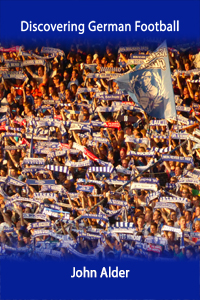
This short guide will help you plan your trip and decide which clubs to visit. There is also key information on every club in the top three divisions as well as links to the best books, websites, blogs and podcasts.
Things to see and do in Hannover
Hannover is one of Germany’s greenest cities. Although it was almost totally destroyed during WW2 it has been carefully restored and timber-framed houses and period building give the city a historic feel. And there are plenty of things to see and do here as well as watch football. Here are my top suggestions.
Visit the Herrenhausen gardens
This 300-year-old garden complex is one of Hannover’s major attractions. The centrepiece, called the “Great Garden”, is the best know baroque garden in Europe and tourists flock here in their thousands.
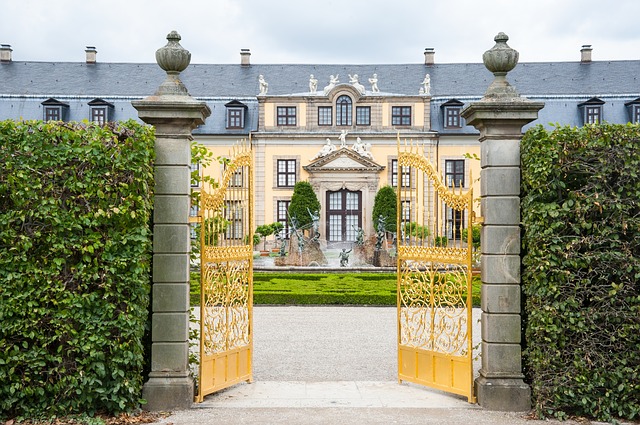
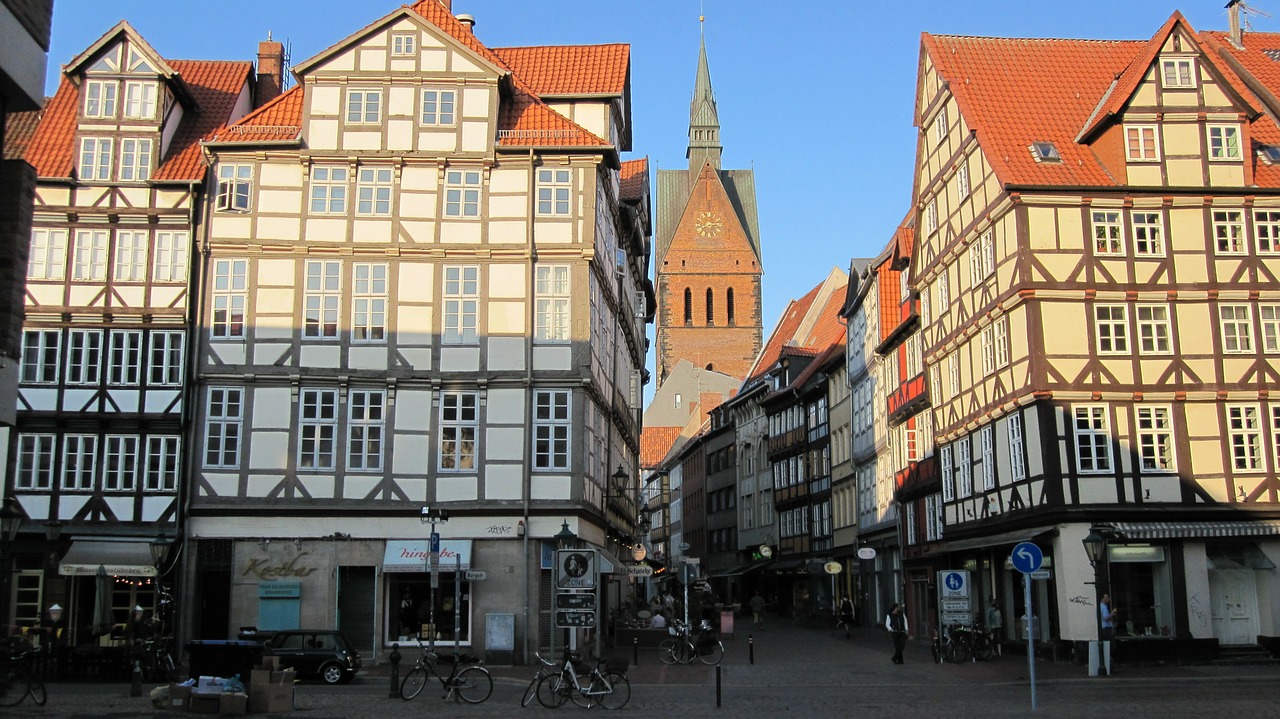
Wander through the old town (Altstadt)
Hannover’s old town, which was almost completely destroyed during the second world war, has been painstakingly restored and is now perfect if you want to do a bit of shopping, sit in a cafe or simply wander through the atmospheric streets.
You can book a guided walking tour
Take the lift to the top of the New Town Hall
This lift is curved. As you go up you can look through the floor at the city below. When you get to the top you get a superb view of Hannover and its surroundings. 97.73 meters
Hop on a bus
Tours on open top double-decker buses leave from the tourist information office every two hours. There is a commentary in English which describes the main sights of the city. You can get on and off and use the buses as often as you like for a 24 hour period.
Walk around Maschsee
This is a beautiful lake in the centre of town. People walk or jog around the banks, have picnics or try water sports.
